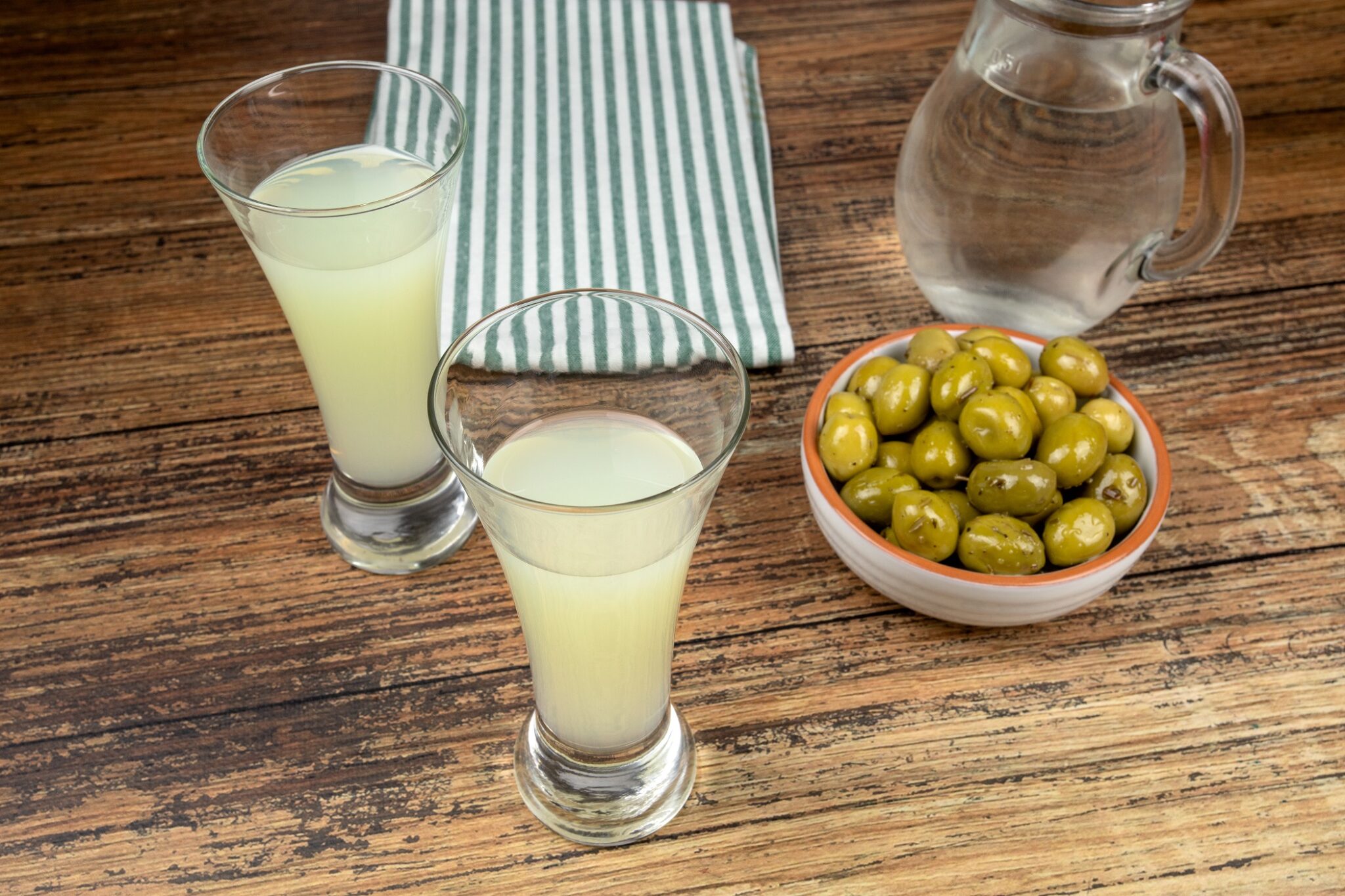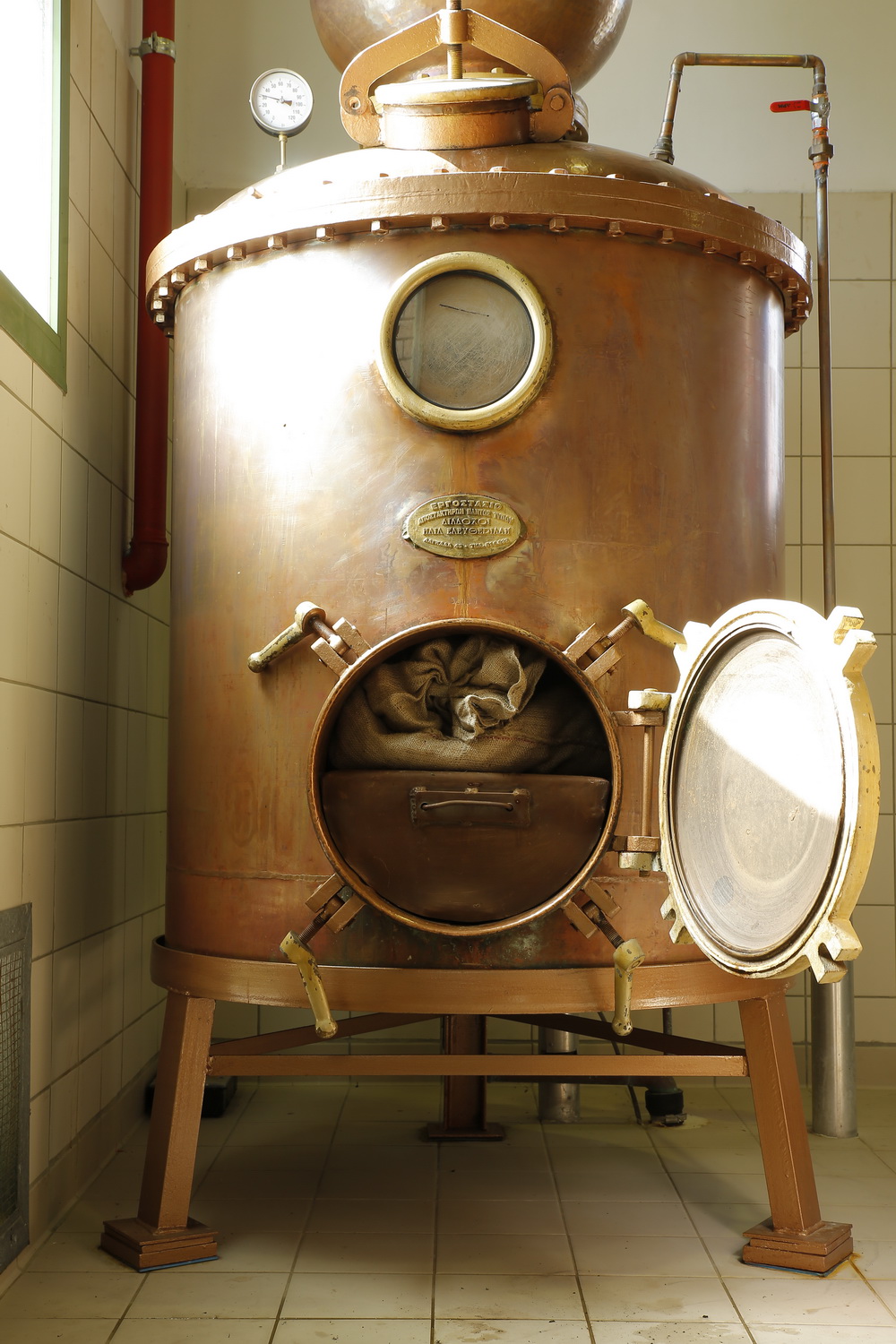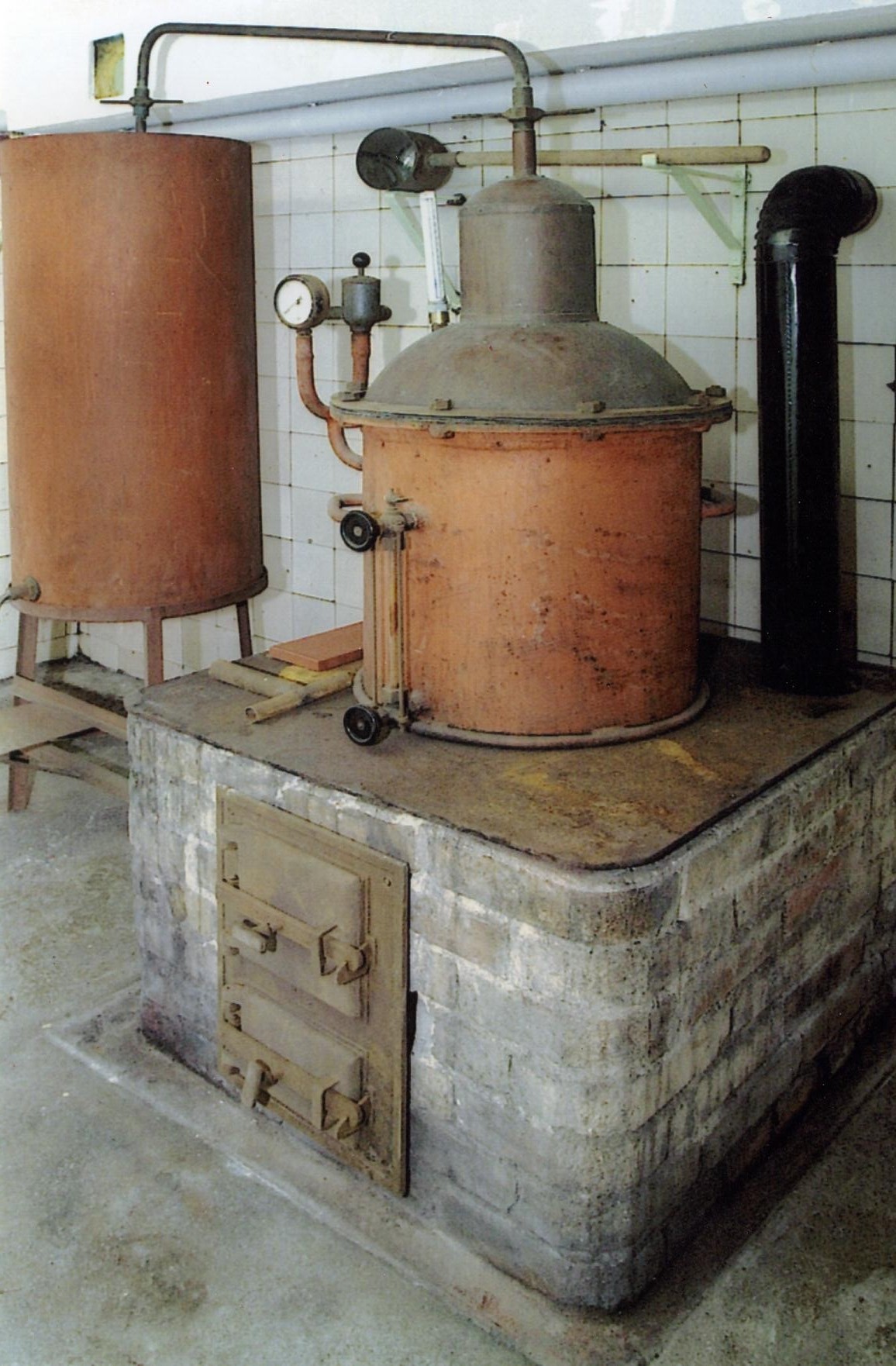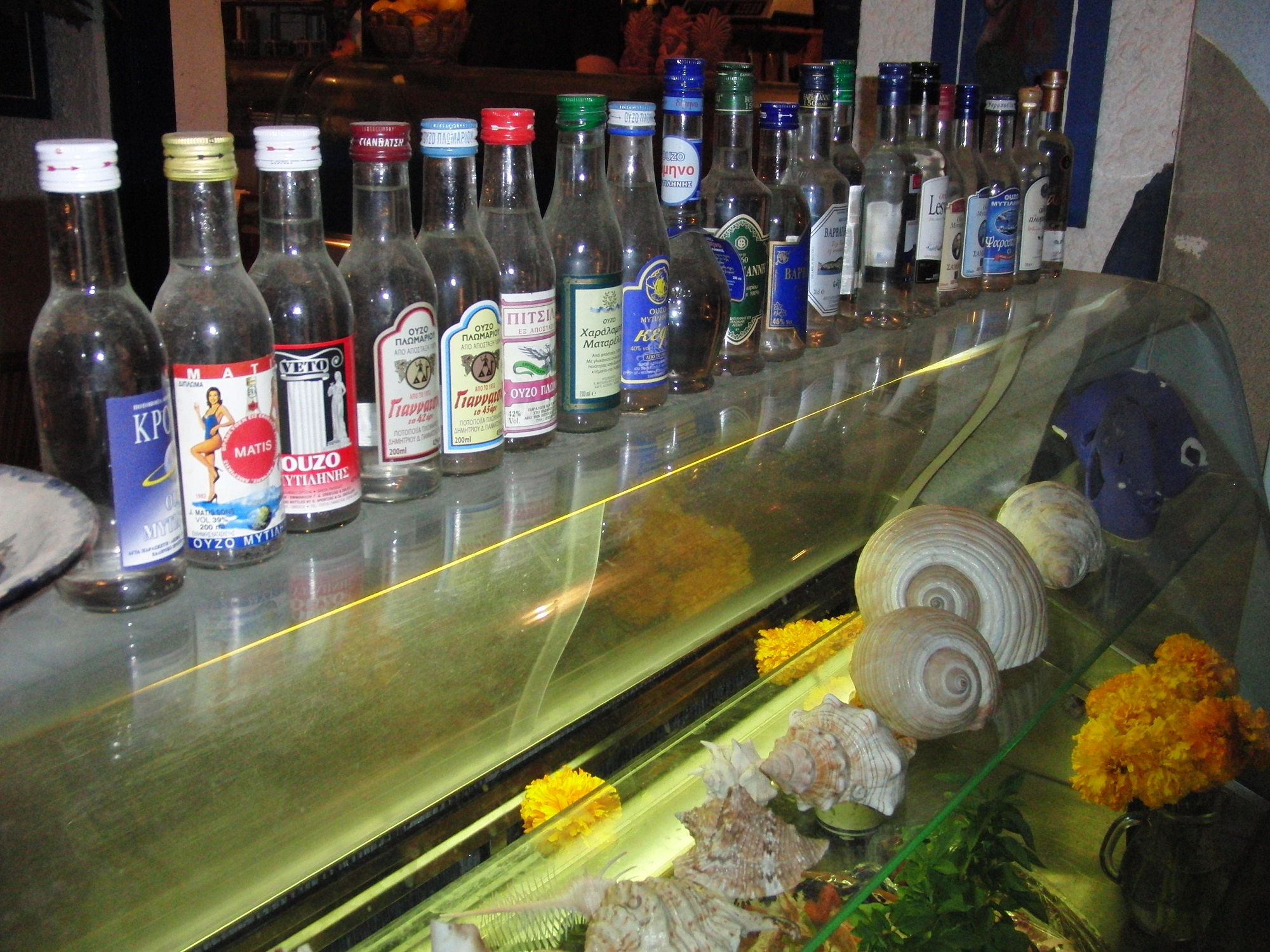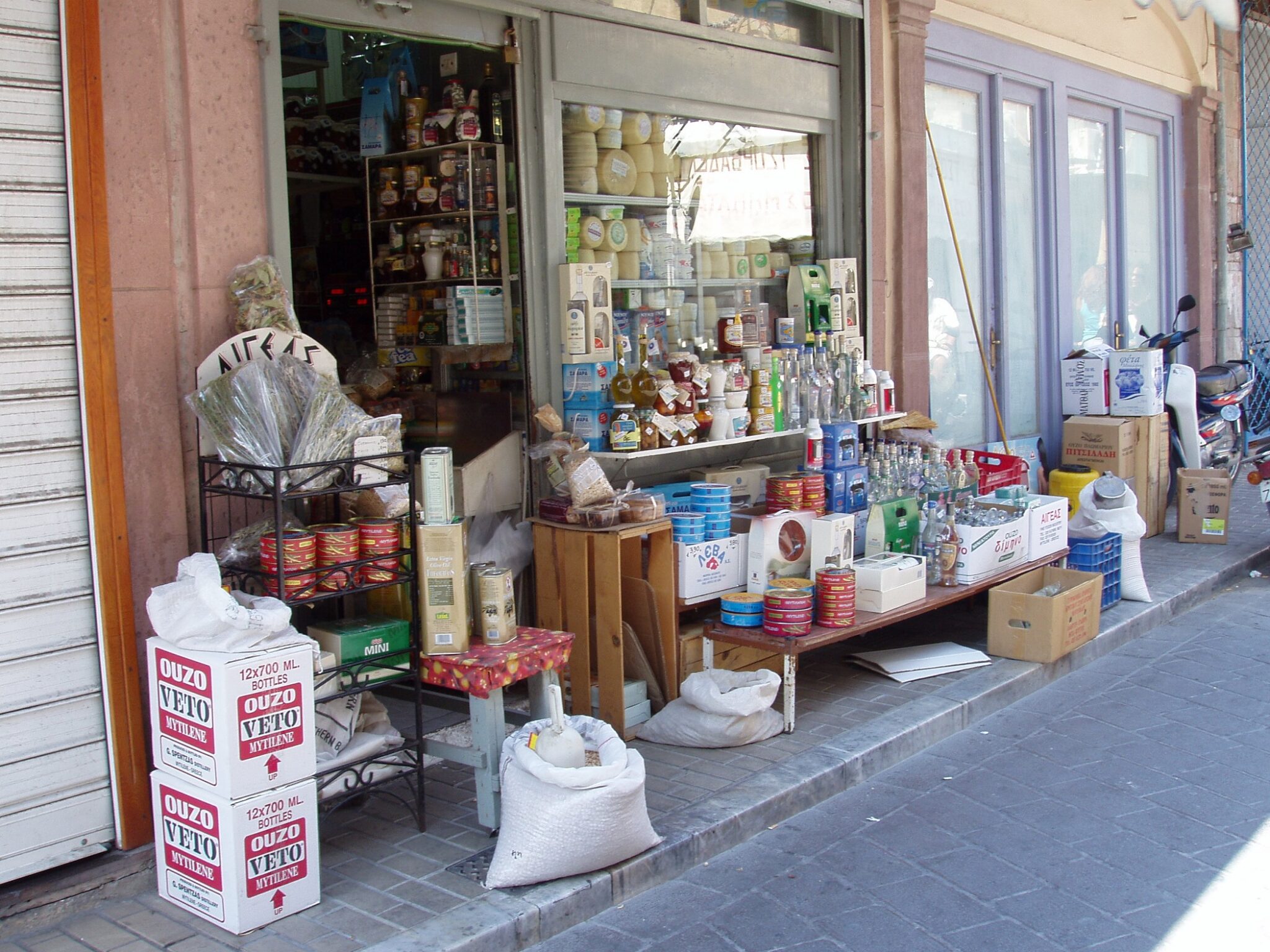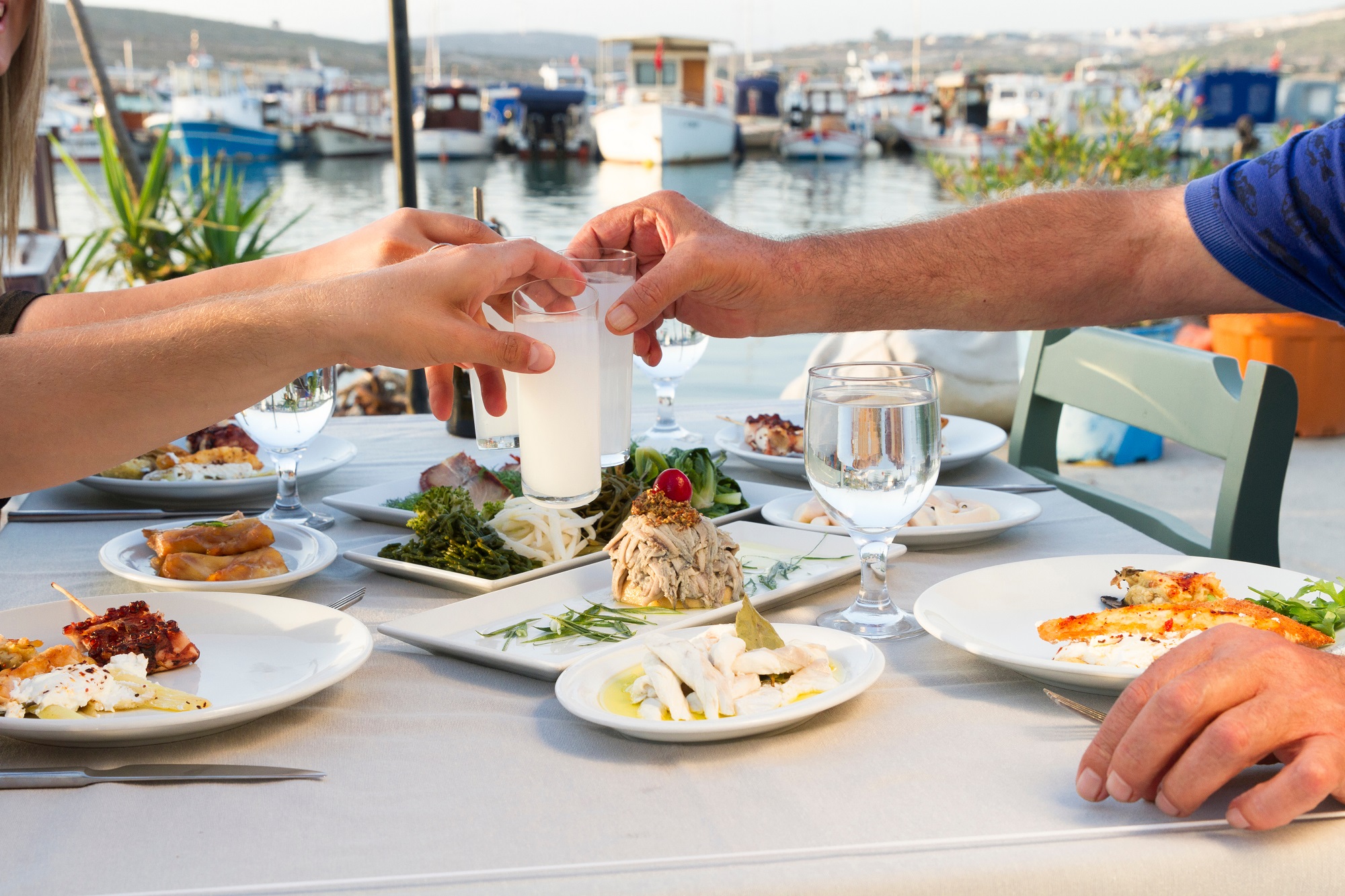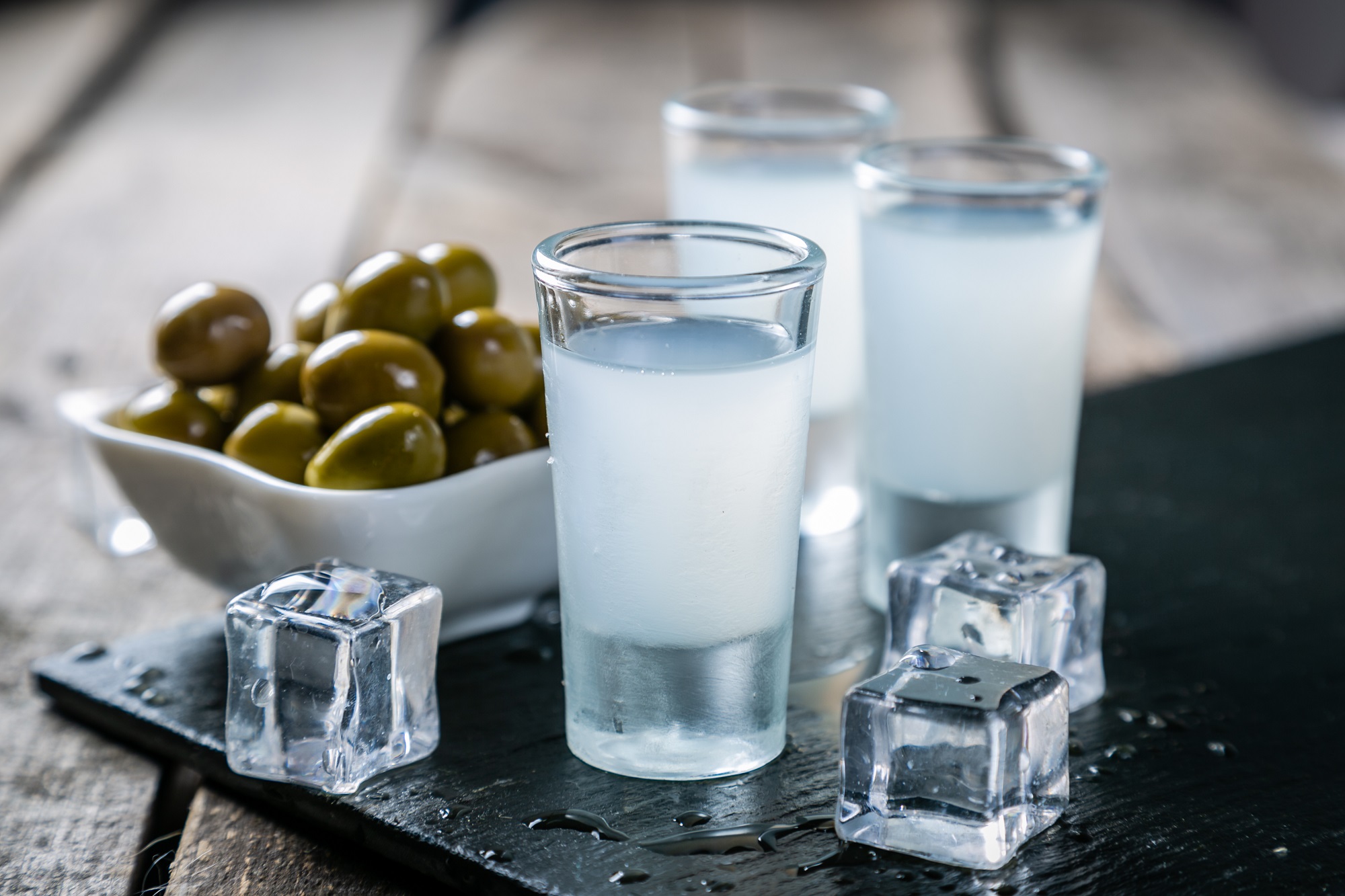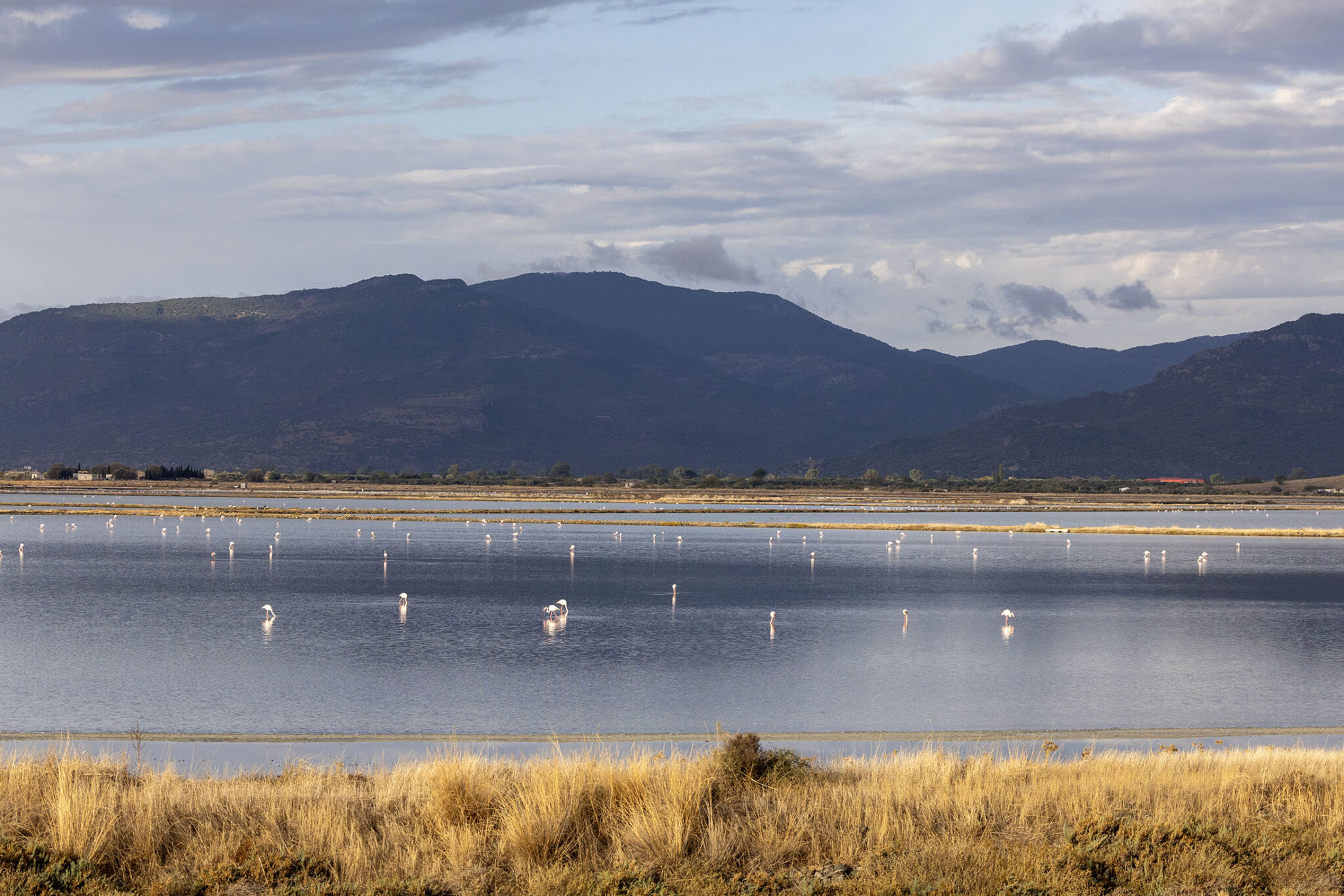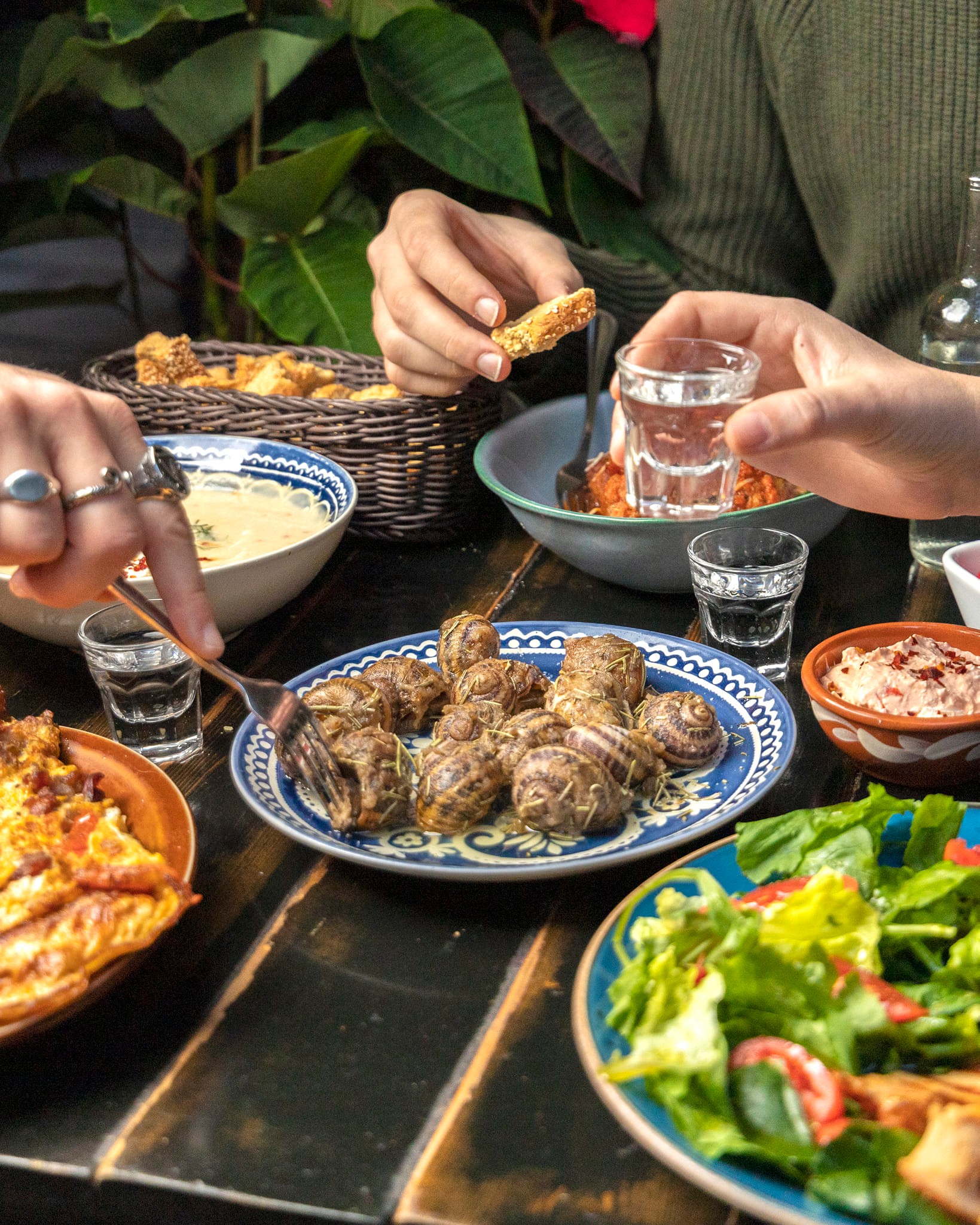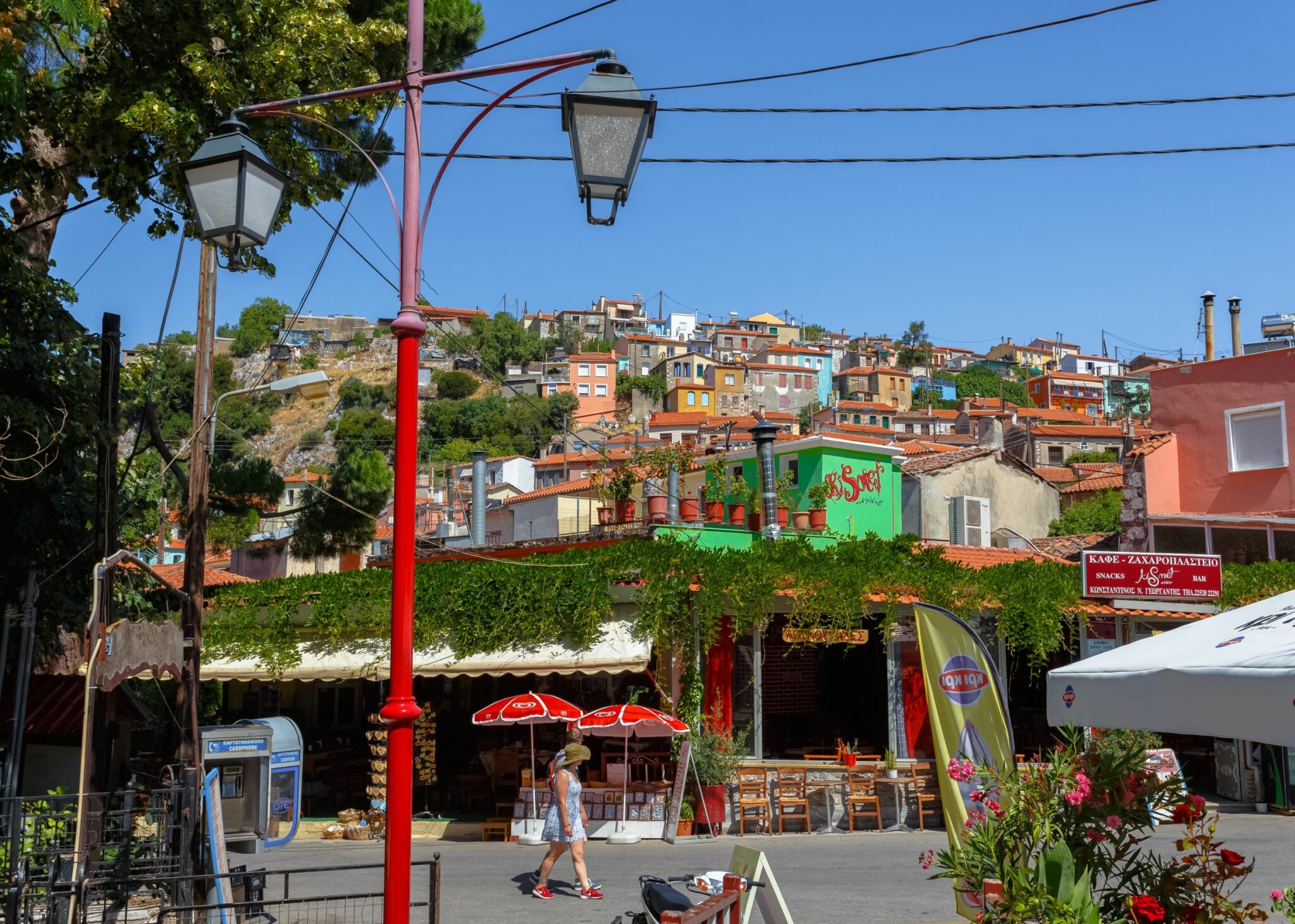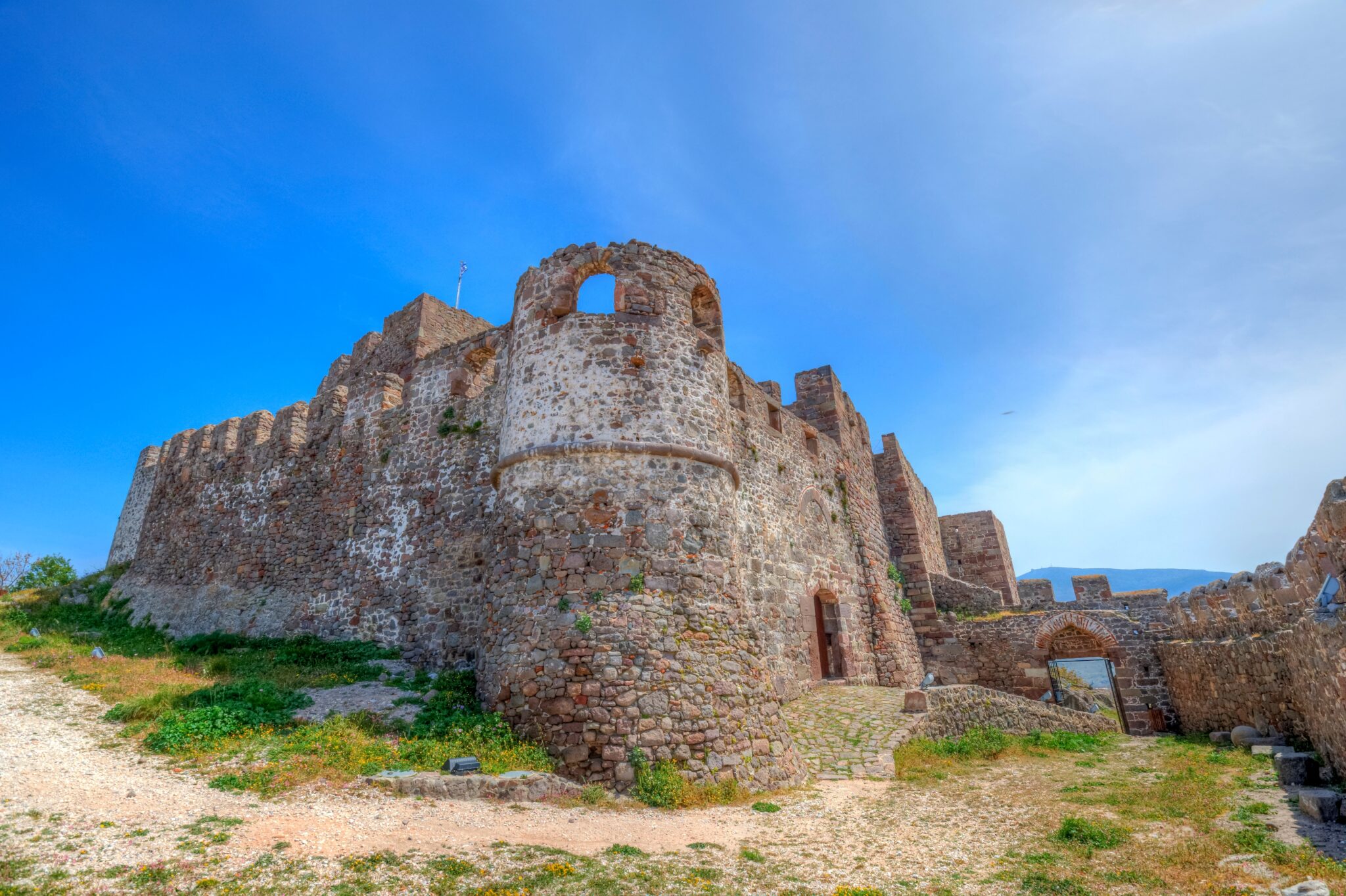“The ouzo ritual is about hunger in the same way that the act of lovemaking is about procreation” Athenaeus of Naucratis writes in his work The Deipnosophistae (the dinner philosophers), already in the Hellenistic period. Today, they say that this spirit is like ancient culture mixing with the blue of the Aegean providing the Greekest drink in the world.
It may be the anise, a plant that has been around for over 3,000 years, that creates this intoxicating aura. But it’s also the alcohol that, after being distilled in the ancient distillation pot, the alembic, is transformed as it mixes with the fragrant seeds, finally producing, after many distillations, the ethereal drink known as ouzo.
Diluted with water or neat, ouzo is the favourite summer drink whose lovely scent spreads throughout the entire Mediterranean: it doesn’t matter that it’s only called ouzo in Greece, since it’s basically the same drink as the French pastis and anisette or the popular in the coasts of north Africa arac.
Ouzo throughout history
Since antiquity, humans have experimented, creating various alcoholic drinks, mixing them with aromatic herbs, fruit, roots, flowers and seeds. The people of Constantinople and the Greek populations of Smyrna and Alexandria excelled in this sector, creating important spirit distillation centres.
After all, the land of Asia Minor and of Thrace –where the vines and fig trees were in abundance– offered the best raw materials, while the cultivation of anise in Lesvos and Lemnos, and the production of mastic in Chios, became essential in the creation of “raki”, while in the mid 18th century, the art of distillation arrived to Mytilene.
After 1922, the people who arrived to Greece from Asia Minor brought with them the knowledge, giving the production of ouzo a great push, in the areas they settled in. The distilled grape marc first produced tsipouro, that was infused with aromatic seeds that improved its taste. So, when tsipouro met anise, ouzo was born, and since then, it flows abundantly, with Lesvos being the place with the largest number of ouzo distilleries.
The origins of the word ouzo are lost in time. The most plausible version is that during the Ottoman Empire’s alcohol prohibition when it was permitted to export raki, and when Marseille was the main destination, the raki crates, for customs purposes, had “Uso Marseille” on them, that is “to be used in Marseille” and ouzo comes from the corruption of the word “uso”.
Ouzo: an exclusively Greek product
According to EU regulations, for a spirit with anise to be named ouzo it must:
- Be produced in Greece.
- Include a mix of alcohol that has been infused with anise seeds and perhaps fennel seeds and seeds from Chios’ native mastic trees (Pistacia Lentiscus Chia or Latifolia), in addition to other aromatic seeds, plants and nuts.
The scented alcohol must be at least 20% of the final product.
What makes the true difference, in practice, is the experience and knowledge of the producers. Each distillery keeps the recipe of their blend secret, and the recipe is passed on from one generation to the next. Everything plays its part: a different infusion, the speed of the distillation, the number of distillations, even the size of the distillation pot. The distillate is then kept “pure”, in stainless steel tanks to rest and give time to the ingredients to mix. The mix becomes homogenous, gaining a pleasant taste.
Ouzo’s strength depends on the place it is made, the minerals in the water used and aroma it gets from the anise, the fennel, the mastic, the coriander, the nutmeg, the orange blossoms, the cloves, the cardamum, and the mint. Anise seeds are always the majority of the seeds used. The anise grown in Lisvori, Lesvos, is considered the best in Greece.
Ouzo and Mytilene
Ouzo is definitely associated with Greece, but more importantly with Mytilene, since the island of Lesvos is historically a place where ouzo was and is produced. In the capital of Lesvos, the air smells of ouzo, “intoxicating” both locals and visitors. People grow up in ouzo and its almost part of their DNA.
In addition, ouzo has been associated with the sea, since it’s the main show at the quaint waterfront taverns, accompanying endless mezze and delicacies. Ouzo and mezze is a lifestyle and philosophy in Lesvos. In fact, in Mytilene, they knead the minced beef into meatballs using ouzo and cumin. The fava, the lakerda (pickled bonito), the salted sardines, the octopus all seem to seek ouzo, as their perfect match. This is an island where generation after generation grew old drinking ouzo and performing its “ritual”.
Apart from the philosophy and myth around it, ouzo is also about a way of life that is 100% Greek. Inviting someone to “come drink an ouzo with me” is not an invitation to dinner or drinks – it is first and foremost an invitation to spend time together. In addition, there is no main course: all the food is an assortment of mezze, served in small quantities, in rotation. There’s no one dish directly in front of you, but many.
Ouzo has a strong, quite unique taste, and a particular sweetness. Traditionally it’s associated both with mezze and water. And, it could be said, that there’s no other drink that suits the complexity of the cuisine of Lesvos better. Salted sardines or papalinas (small sardines) from Kalloni, sundried mackerel, lakerda, and vinegar marinated small fish, all seem to seek ouzo, that comes in perfect contrast with the saltiness and the tartness of the vinegar and lemon of the food.
In addition, ouzo suits all the raw seafood, like cockles, mussels, ark clams, smooth clams, grooved sea squirt – and, of course, the best among them, the scallops. Furthermore, fried courgettes and aubergines, courgette blossoms stuffed with cheese, spicy giouzlemedes (fried cheese pies), bottarga, and various types of olives are perfect mezze for ouzo. You can make your own olive appetizer by marinating them in some ouzo and olive oil and sprinkling them with crushed coriander seeds, serving them with lemon slices.
The list goes on and on, with the addition of spicy cheese, tzatziki, tarama salad, smoked aubergine spread, delicious grilled octopus.
With water or ice?
Most alcoholic drinks have been served neat or with the addition of water, depending on the fashion of the times. For example, ouzo neat is great to sample the flavours and distinguish its aromas, but the addition of some water or an ice cube or two make it easier to drink, and milder. Don’t pay heed to hardcore connoisseurs, as the ice melts in the ouzo in the heat of a summer afternoon by the sea, the flavour becomes softer and the mood more relaxed.
Visit the Ouzo Liquor Museum in Plomari to learn more about this intoxicating drink’s history. And also make sure you visit the distillery of the Association of Mytilene Distilleries (EPOM) in Mytilene, where you can enjoy a tour and learn about the drink while trying Mytilene mezze at a traditional Lesvos coffee shop.
Read also:
Preveza’s finest delicatessen products
A delicious Greek superfood turns into the perfect dessert and makes a difference




